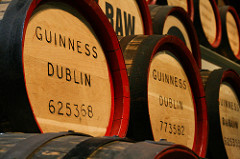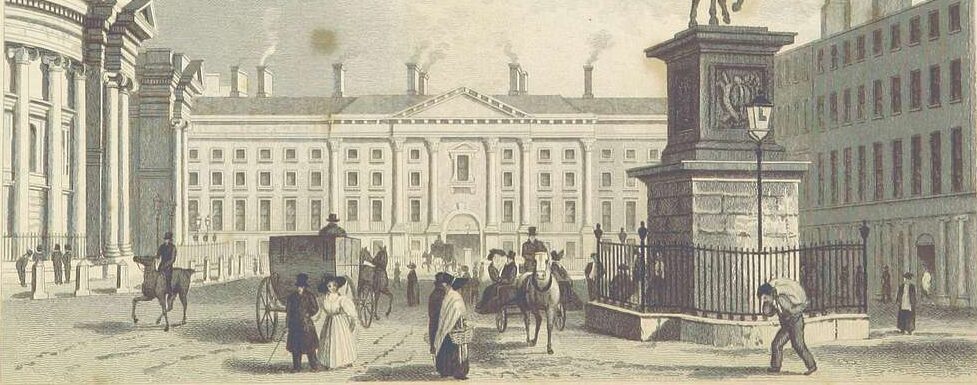 The Guinness Storehouse claims to be Ireland’s most popular tourist attraction. As the city is out of the running to become European Capital of Culture, 2020 (a title it last held in 1991), and as the Web Summit is moving to Lisbon from next year, tourist attractions like the Storehouse are probably glad to know that Dublin seems to be taking London’s mantle as Capital of Defamation, as the destination of choice for libel tourists seeking a congenial jurisdiction in which to bring a defamation action.
The Guinness Storehouse claims to be Ireland’s most popular tourist attraction. As the city is out of the running to become European Capital of Culture, 2020 (a title it last held in 1991), and as the Web Summit is moving to Lisbon from next year, tourist attractions like the Storehouse are probably glad to know that Dublin seems to be taking London’s mantle as Capital of Defamation, as the destination of choice for libel tourists seeking a congenial jurisdiction in which to bring a defamation action.
This is according to a new report from Thomson Reuters (see press release (via Inforrm’s blog) | The Guardian | The Independent | The Times (sub req’d) | Irish Legal News). Thomson Reuters have published research in the past about the numbers of defamation cases in London, arguing that the number of defamation cases against media groups halved in the five years from 2008/09 to in 2012/13, and that the UK’s Defamation Act, 2013 would bring further changes to the UK’s legal landscape. It is unsurprising, then, that their most recent report continues this theme. The headline on the press release for the report is that the number of defamation cases has fallen by a third in the last year; and a sub-head explains the drop by reference to the impact of the 2013 Act. However, a post on Inforrm’s blog expressed quite severe doubt the methodology behind the statistics.
The press reports have focussed on the finding that the number of defamation cases relating to social media is the only category showing an increase (The Guardian | The Independent). Not for the first time, it seems that England’s difficulty is Ireland’s opportunity: the Times (sub req’d’ see also Irish Legal News) adds that Dublin and Belfast might take advantage: “Damages awards in the Irish capital routinely hit the hundreds of thousands, while on average they are in the tens of thousands in London. In Belfast, the 2013 legislation is not applicable.”
There is certainly some anecdotal support for this. Paul Tweed has made the point in the Huffington Post. Writing this time last year in the Irish Times, under the headline “Libel tourism may become our newest cottage industry“, Hugh McCarthy argued that, following the 2013 Act’s reforms, Dublin might indeed replace London as the defamation destination of choice. And he pointed to the defamation action which had been filed in the Irish High Court the previous month by Jessica Biel and Justin Timberlake against Heat magazine. McCarthy concluded that, “[a]lthough the matter was subsequently settled out of court with an apology, it may be a harbinger of things to come”.
On the one hand, one explanation of the relative decline of London’s attractiveness to your average libel tourist is said to lie in section 1(1) of the Defamation Act, 2013, which provides that a “statement is not defamatory unless its publication has caused or is likely to cause serious harm to the reputation of the claimant” (see the note here (pdf)). This requirement of “serious harm” is said to be weeding out those claims which have only tenuous connections with London. And since the Irish Defamation Act, 2009 (also here) does not have a similar requirement, it is felt that Dublin would be a more congenial destination for libel tourists. However, this is only half the story. Section 1(1) codified the common law rule adumbrated by Tugendhat J in Thornton v Telegraph Media Group Ltd [2010] EWHC 1414 (QB) (16 June 2010) (the claimant was successful at the subsequent trial: [2011] EWHC 1884 (QB) (26 July 2011); on Thornton and s1(1), see Cooke v MGN [2014] EWHC 2831 (QB) (13 August 2014) (currently under appeal); Lachaux v Independent Print [2015] EWHC 2242 (QB) (30 July 2015)). And section 3(2) of the Irish Act (also here) provides that it “shall not affect the operation of the general law in relation to defamation except to the extent that it provides otherwise (either expressly or by necessary implication)”. Hence, if the requirement of serious harm is a matter of common law (and Thornton says it is), and if it is not precluded by the 2009 Act, then it could very well form part of Irish law.
We must, of course, await a suitable case to answer the question definitively; but, as I read the Act, there is nothing in it to preclude the recognition and application of a common law rule of serious harm. Tughendhat J held that regard for Article 10 of the European Convention on Human Rights and the principle of proportionality both require a threshold of seriousness in defamation claims; and section 2 of the European Convention on Human Rights Act, 2003 (also here) requires that Acts – such as the Defamation Act, 2009 – must be interpreted a manner compatible with the Convention. This interpretative obligation would preclude an interpretation of the definition of defamation in sections 2 and 6 of the 2009 Act (also here and here) to exclude the seriousness threshold by necessary implication.
Another explanation of the relative decline of London’s attractiveness to your average libel tourist is said to lie in section 9(2) of the Defamation Act, 2013, which provides that the court must be “satisfied that, of all the places in which the statement complained of has been published, England and Wales is clearly the most appropriate place in which to bring an action in respect of the statement”. This requirement of appropriateness is said to be at least as important as section 1(1) in weeding out those claims which have only tenuous connections with London. And since the Irish Act does not have a similar requirement, it is felt that Dublin would be a more congenial destination for libel tourists. However, as with section 1(1), this is only half the story. Section 9(2) codified the approach of the Court of Appeal in Dow Jones v Jameel [2005] EWCA Civ 75 (03 February 2005) established that there needs to be a real and substantial tort within the jurisdiction for a defamation claim to be made (see also Sullivan v Bristol Film Studios [2012] EWCA civ 570 (03 May 2012); Reed Elsevier (t/a Lexisnexis) v Bewry [2014] EWCA Civ 1411 (30 October 2014)). In Byrne v RTE [2006] 2 ILRM 375, [2006] IEHC 71 (3 March 2006) MacMenamin J referred to Jameel as one of a number of persuasive authorities cited to him in the course of argument. Again, if the Jameel abuse jurisdiction is a matter of common law, and if it is not precluded by the 2009 Act, then it could very well form part of Irish law. Again, we must, of course, await a suitable case to answer the question definitively. And, again, as I read the Act, there is nothing in it to preclude the continuing application of the Jameel abuse jurisdiction.
On the other hand, an explanation of the relative increase of Dublin’s attractiveness to your average libel tourist is said to lie in the more generous damages thought to be available by contrast with London. It is true that, in the last appeal before the 2009 Act came into effect, the Supreme Court substituted the sum of €1,250,000 for an award by the jury in the High Court of €1,872,000 (see Leech v Independent Newspapers (Ireland) Ltd [2014] IESC 79 (19 December 2014); see also the companion appeal [2014] IESC 78 (19 December 2014)). However, in the first appeal after the 2009 Act came into effect, the Court of Appeal in McDonagh v Sunday Newspapers [2015] IECA 225 (19 October 2015) set aside an award of €900,000 on the grounds that the evidence did not support the finding of defamation, and ordered that portion already paid to be returned. Section 31 of the 2009 Act (also here) is designed to limit awards of damages. Moreover, the Court of Appeal has power to substitute for any amount of damages awarded in the High Court such amount as it considers appropriate (see section 13 of the Act (also here) read with section 74 of the Court of Appeal Act, 2014 (also here)). The combination of these provisions is intended to bring defamation damages in Dublin into line with the lower awards in London.
It is likely, therefore, that a libel tourist who presses a case to judgment in Dublin may not find it all that very different from London, after all.

3 thoughts on “Is Dublin becoming the defamation capital of the world, the libel-tourism destination of choice?”